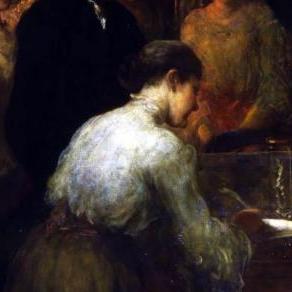Lilian Jane Gould facts for kids
Quick facts for kids
Lilian Jane Gould
|
|
|---|---|

Gould signing the membership book of the Linnaean Society
|
|
| Born |
Lilian Jane Gould
19 February 1861 England
|
| Died | 2 December 1936 (aged 75) |
| Alma mater | Somerville College, Oxford |
| Spouse(s) | Victor Herbert Veley |
| Awards | Fellow of the Linnean Society |
| Scientific career | |
| Fields | Natural Sciences |
Lilian Jane Gould (1861–1936) was a smart British scientist. She studied tiny living things called microorganisms, especially those found in drinks like rum. Lilian was also one of the first women to join the important Linnaean Society. Besides her science, she was famous for being one of the first people in Europe to breed beautiful Siamese cats.
Contents
About Lilian Jane Gould
Lilian Jane Gould was born on February 19, 1861, in England. She was a very bright student. She earned a scholarship to attend Somerville College, Oxford, a famous university. There, she studied Natural Sciences.
In 1894, Lilian finished her degree with top honors. She focused on animal morphology, which is the study of how animals are shaped. In 1895, she married Victor Herbert Veley. He was also a scientist and a businessman. They worked together on many science projects.
A Pioneer for Women in Science
At that time, women at Oxford University could not get a doctorate degree. So, Lilian went to Trinity College, Dublin in 1905. There, she earned her D.Sc. degree, which is a very high science degree.
In 1904, Lilian made history. She became one of the first women ever to be chosen as a member of the Linnean Society of London. This society is a very old and respected group for natural scientists.
Helping During Wartime
During World War I, Lilian helped her country. She worked as a leader for a British Red Cross unit in London. The Red Cross helps people during emergencies and wars.
Lilian's husband, Victor, passed away in 1933. Lilian herself died on December 2, 1936.
Lilian's Scientific Discoveries
Lilian Gould wrote her first two science papers while still at Oxford. One paper was about the colors of butterfly and moth larvae. Larvae are the young forms of these insects. The other paper was about a type of amoeba called Pelomyxa palustris. Amoebas are tiny, single-celled organisms.
Studying Microorganisms in Drinks
Lilian's husband, Victor Veley, was a scientist and ran the Baddow Brewery Company. This meant he worked with drinks like rum. Lilian joined him in studying the tiny living things, or microorganisms, found in these drinks.
Together, they wrote several short papers about their findings. They even published a book in 1898 called The Micro-Organism of Faulty Rum. This book explained how tiny organisms could affect the quality of rum.
Lilian and Siamese Cats
Lilian Gould also played a big part in the history of Siamese cats in the Western world. She was one of the first people in Europe to breed these special cats.
Bringing Siamese Cats to Europe
In 1884, Lilian's brother, Edward, was working in Bangkok, Thailand. He brought a pair of Siamese cats back home as a gift for Lilian. The cats were named Pho and Mia.
Pho and Mia had three kittens. All five cats became very popular. They were shown at a cat show in London's Crystal Palace the next year. People were amazed by their unique look.
Lilian loved Siamese cats so much that she helped start the Siamese Cat Club in 1901. This club helped to promote and protect the breed.

